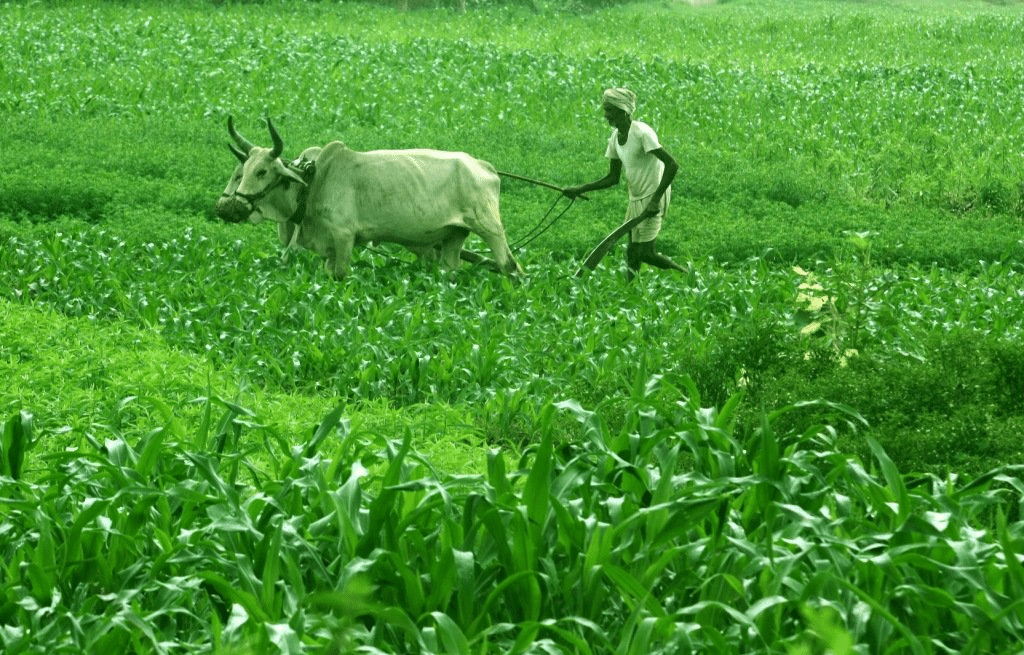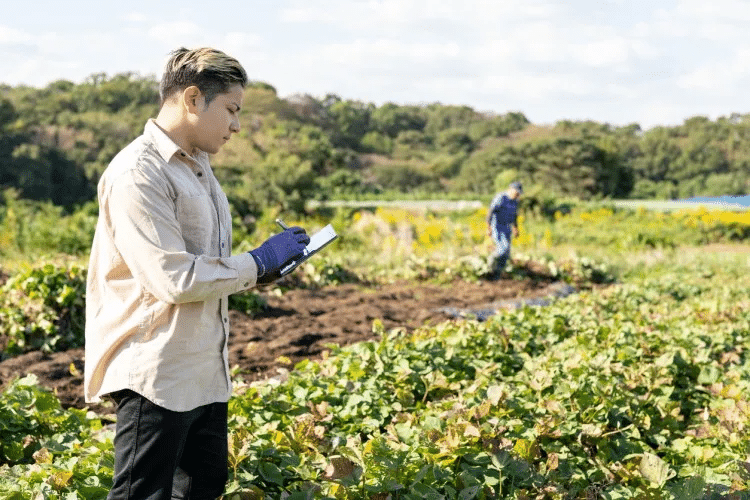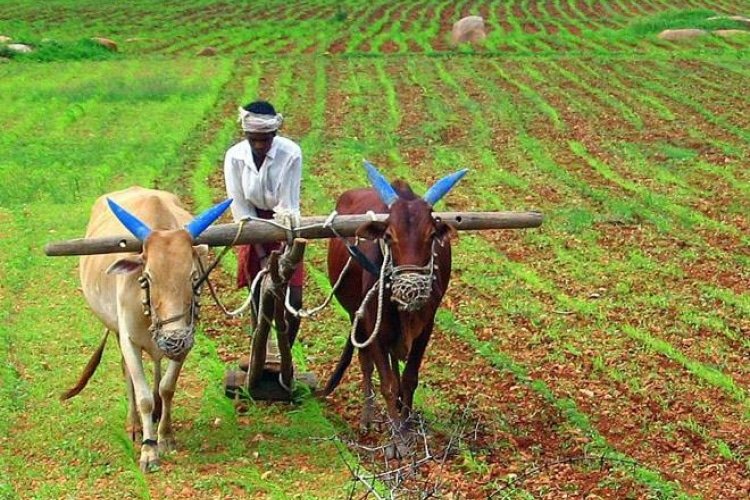Agriculture plays a pivotal role in feeding the global population, sustaining economies, and maintaining environmental health. However, farming is capital-intensive, with significant upfront costs related to land acquisition, equipment purchase, seeds, livestock, and day-to-day operational expenses. Agricultural loans serve as a vital financial tool to help farmers manage these costs, maintain cash flow, and grow their businesses. This article will delve into the reasons why agricultural loans are crucial for farmers, the benefits they offer, and how they contribute to the overall success and sustainability of the agricultural industry.
Key Takeaway
Agricultural loans are vital to the success and sustainability of farmers. They provide access to capital, help manage risks, promote technological innovation, and support expansion efforts. With favorable terms and government support, agricultural loans are crucial in ensuring that farmers can continue to meet the world’s growing demand for food while promoting sustainable farming practices.
Understanding Agricultural Loans
Agricultural loans are financial products designed to provide funding for farmers and ranchers to help them cover a wide array of expenses related to running and expanding their operations. Unlike conventional loans, agricultural loans are often tailored to the seasonal nature of farming, where income is unpredictable and typically depends on the harvest cycle. These loans are offered by various financial institutions, including commercial banks, government agencies, and specialized agricultural lenders.
Agricultural loans may be used for different purposes, such as purchasing land, buying farming equipment, expanding operations, acquiring livestock, or managing operational costs. These loans come with flexible terms that take into account the specific challenges and cash flow needs of farmers.
Why Are Agricultural Loans Crucial for Farmers?
1. Access to Capital for Farm Expansion
One of the primary reasons agricultural loans are crucial for farmers is that they provide the necessary capital for farm expansion. Expanding a farming operation can involve purchasing new land, acquiring additional livestock, upgrading equipment, or diversifying crops. However, the costs of expansion can be prohibitive, especially for small and medium-sized farms.
Agricultural loans enable farmers to access capital for these investments without depleting their savings or taking on unmanageable debt. For example, farm ownership loans provided by government programs like the USDA’s Farm Service Agency (FSA) allow farmers to purchase additional land or refinance existing debt. With the help of these loans, farmers can increase production capacity, diversify their operations, and increase their long-term profitability.
2. Ensuring Sufficient Working Capital
Farming operations require a continuous flow of capital to cover operational expenses such as purchasing seeds, fertilizers, fuel, labor, and equipment maintenance. However, income from farming is seasonal and irregular, with farmers typically receiving payments after harvest, which can create cash flow gaps.
Agricultural loans, particularly operating loans, allow farmers to borrow money to cover day-to-day expenses during the off-season or until the harvest is sold. These loans ensure that farmers have enough working capital to keep their operations running smoothly throughout the year, regardless of the timing of income. Without access to agricultural loans, many farmers would struggle to maintain their business operations during lean periods.
3. Managing Risk and Mitigating Financial Uncertainty
Agriculture is inherently risky due to factors such as unpredictable weather, fluctuating commodity prices, and the potential for crop diseases or pests. These risks can lead to financial setbacks, crop failures, or reduced yields, making it difficult for farmers to meet their financial obligations.
Agricultural loans offer a safety net for farmers by providing funds to cover operating costs during difficult times. Government-backed loans, such as those offered by the USDA, are particularly important in this regard. They provide favorable terms, such as low-interest rates and extended repayment periods, which help farmers manage financial setbacks resulting from unforeseen challenges.
In addition, many loan programs are designed to support disaster recovery efforts, such as those available in the aftermath of floods, droughts, or other natural disasters. These loans help farmers rebuild their operations and recover from losses.
4. Facilitating Technology Adoption and Farm Modernization
In an era where technological advancements are transforming agriculture, the ability to invest in modern equipment and technologies is essential for improving efficiency, productivity, and sustainability. However, purchasing new equipment or adopting cutting-edge technology can be prohibitively expensive for many farmers.
Agricultural loans provide the funding necessary for farmers to invest in advanced technologies, such as automated machinery, GPS-guided tractors, irrigation systems, and precision farming tools. These investments allow farmers to optimize crop yields, reduce waste, and increase overall farm productivity. Moreover, technological advancements can help farmers better manage environmental challenges and improve sustainability.
5. Improving Sustainability and Environmental Stewardship
Sustainability has become an increasingly important focus in agriculture, as consumers demand more eco-friendly practices, and climate change raises concerns about food production. Farmers are now tasked with adopting sustainable farming practices, such as water conservation, soil health management, and reducing carbon emissions.
Agricultural loans can play a vital role in funding projects that promote sustainability. For example, loans may be used to install water-efficient irrigation systems, adopt conservation practices, or purchase equipment for organic farming. By using loans to fund these initiatives, farmers can reduce their environmental footprint, improve soil quality, and increase their long-term viability.
Government-backed programs also provide loans for conservation efforts, helping farmers implement practices that protect natural resources and contribute to environmental preservation.
6. Supporting Small Farmers and Beginning Farmers

Small-scale farmers and beginning farmers face unique challenges in accessing capital, as they may lack collateral, credit history, or experience. Traditional lenders may be hesitant to provide loans to these farmers due to perceived risks. Agricultural loans, particularly those offered through government programs, are designed to address these challenges and ensure that small and beginning farmers have access to the financial resources they need to succeed.
Programs like the USDA’s Microloan Program or the Beginning Farmer and Rancher Program offer financial assistance to small-scale farmers, allowing them to purchase land, equipment, and other necessary resources. These loans often come with more favorable terms, lower interest rates, and flexible repayment schedules, enabling new farmers to establish themselves and grow their businesses.
Types of Agricultural Loans Available to Farmers
Agricultural loans come in various forms, each catering to different aspects of farming. Some common types include:
1. Farm Ownership Loans
These loans help farmers purchase land or improve existing farmland. They can be used for the acquisition of agricultural property or refinancing existing debts related to farm ownership.
2. Operating Loans
Operating loans provide short-term financing to cover day-to-day expenses, such as seeds, fertilizers, labor, and equipment maintenance. These loans help farmers maintain their operations between harvests.
3. Livestock Loans
Livestock loans are used to purchase or care for livestock, including cattle, pigs, poultry, and more. These loans may also cover veterinary expenses and feed costs.
4. Equipment Loans
Farmers can use equipment loans to finance the purchase of machinery and equipment necessary for farm operations. This may include tractors, harvesters, irrigation systems, and more.
5. Emergency Loans
Emergency loans are available to farmers who experience crop losses or damage due to natural disasters such as floods, droughts, or hurricanes. These loans help farmers recover from disasters and get their operations back on track.
| Topic | Key Details |
|---|---|
| Types of Agricultural Loans | Farm Ownership, Operating, Livestock, Equipment, Disaster Recovery |
| Benefits of Agricultural Loans | Access to capital, Cash flow management, Risk mitigation, Farm expansion, Technology adoption |
| Eligibility for Agricultural Loans | Based on creditworthiness, business plan, farm size, and farming history |
| Loan Uses | Purchasing land, Livestock, Equipment, Operational costs, Disaster recovery |
| Government Programs | USDA Farm Service Agency (FSA) loans, Low-interest rates, Extended repayment terms |
| Risk Management | Helps mitigate crop failure, weather-related losses, and unpredictable markets |
| Interest Rates | Competitive rates, often lower than commercial loans, vary based on loan type and lender |
| Repayment Terms | Flexible terms, seasonal payment options based on harvest cycles |
| Loan Types for Farmers | Beginning farmer loans, Microloans, Conservation loans, Emergency loans |
The Role of Agricultural Loans in Sustainable Farming
- Overview: This article explores how agricultural loans can support farmers in transitioning to and maintaining sustainable farming practices.
- Details:
- The financial challenges of adopting sustainable practices.
- How agricultural loans can help farmers fund renewable energy sources, water conservation technologies, and organic farming practices.
- Government incentives for farmers adopting sustainability-focused techniques.
- Long-term financial benefits of transitioning to more sustainable farming, including cost savings and premium pricing for organic products.
- Case studies of farms that successfully integrated sustainability with the help of loans.
How Agricultural Loans Help Farmers Combat Climate Change
- Overview: This article focuses on how agricultural loans can provide the funding needed for farmers to adapt to and mitigate the effects of climate change.
- Details:
- The risks that climate change poses to agriculture, including unpredictable weather patterns and extreme events.
- The importance of adopting climate-smart farming techniques such as drought-resistant crops and water-efficient irrigation systems.
- How loans can help farmers implement technology and infrastructure to mitigate climate risks.
- Government programs designed to support climate adaptation in agriculture.
- Examples of how loans helped farmers adjust to extreme weather and climate-related challenges.
Exploring the Impact of Agricultural Loans on Small Farmers and Rural Communities

- Overview: This article discusses how agricultural loans provide opportunities for small farmers and rural communities to grow and thrive.
- Details:
- The financial barriers that small farmers face when trying to access capital.
- Government programs and nonprofit organizations offering specialized loans for small-scale farmers.
- How small farmers use loans to expand operations, purchase equipment, or diversify crops.
- The broader economic impact of small-scale farming on rural communities, such as job creation and local business support.
- Success stories of small farmers and rural communities that flourished with the help of loans.
The Process of Securing Agricultural Loans: A Step-by-Step Guide
- Overview: This article provides a detailed guide on how farmers can apply for agricultural loans, including steps, documentation, and tips for improving approval chances.
- Details:
- The types of loans available and how to determine which one is best suited for your needs.
- The information and documents needed to apply, such as credit reports, business plans, and farm financial records.
- How to approach lenders and present a solid case for your loan application.
- Common mistakes to avoid when applying for agricultural loans.
- What to expect during the loan approval process and how long it takes.
How Agricultural Loans Support Innovation in Agriculture
- Overview: This article focuses on how agricultural loans can be used to fund innovation and technological advancement in the farming sector.
- Details:
- The role of technology in modernizing agriculture, including robotics, artificial intelligence (AI), and drones.
- How agricultural loans help farmers adopt new technologies to improve crop yields, efficiency, and sustainability.
- Financial programs that provide loans for research and development in agriculture.
- Success stories of farmers using loans to integrate new technology into their operations.
- The benefits of innovation for farmers, including reduced labor costs, increased production, and better resource management.
The Importance of Agricultural Loans for Young and Beginning Farmers
- Overview: This article discusses how agricultural loans specifically designed for young and beginning farmers can provide crucial support to new entrants in the agricultural industry.
- Details:
- The unique challenges faced by young and beginning farmers, such as limited access to capital, experience, and credit history.
- Government programs that offer special loans, such as USDA’s Beginning Farmer and Rancher Loans, aimed at helping new farmers get started.
- The importance of mentorship and education for new farmers applying for loans.
- How loans enable young farmers to purchase land, equipment, and other resources to establish successful farming operations.
- The long-term impact of supporting young farmers on the sustainability of agriculture.
The Relationship Between Agricultural Loans and Farm Credit Systems
- Overview: This article explains how farm credit systems work and how they provide financial services to farmers, including agricultural loans.
- Details:
- The history and role of farm credit systems in providing affordable loans to farmers and ranchers.
- The structure of the Farm Credit System and how it operates to provide loans, insurance, and other financial services to farmers.
- How farm credit institutions collaborate with government agencies to provide loans for agricultural needs.
- The benefits of farm credit loans, including flexible repayment terms and competitive interest rates.
- Key factors to consider when applying for loans from farm credit institutions.
The Impact of Agricultural Loans on Farm Diversification
- Overview: This article explores how agricultural loans can help farmers diversify their operations and reduce financial risks.
- Details:
- The risks of relying on a single crop or livestock type for income.
- How agricultural loans can enable farmers to invest in new crops, livestock, or alternative farming practices like agroforestry and aquaculture.
- Financial benefits of diversification, including stable income streams and increased resilience to market fluctuations and environmental changes.
- Examples of farmers who used loans to successfully diversify their operations and grow their businesses.
- How to develop a diversification strategy when applying for agricultural loans.
How Agricultural Loans Can Facilitate Farm Succession and Estate Planning
- Overview: This article discusses how agricultural loans can help farmers plan for the future by facilitating farm succession and estate planning.
- Details:
- The importance of succession planning in agriculture to ensure the continuity of family farms.
- How agricultural loans can help finance the transfer of farm ownership between generations.
- Government programs and private-sector loans designed to support farm succession and estate planning.
- Common challenges faced by families when transferring farm operations to younger generations and how loans can alleviate financial burdens.
- Strategies for building a solid succession plan with the help of agricultural loans.
How to Manage Debt with Agricultural Loans: Best Practices for Farmers

- Overview: This article offers advice on how farmers can manage debt and use agricultural loans effectively to ensure financial stability.
- Details:
- The importance of responsible debt management in agriculture and avoiding over-leverage.
- Strategies for managing debt, such as consolidating loans, refinancing, and prioritizing high-interest debt.
- How agricultural loans can be used strategically to pay off existing debt or improve cash flow.
- Financial tools and software that can help farmers track loan payments, expenses, and income.
- The role of financial planning and budgeting in maintaining a healthy debt-to-income ratio.
The Role of Agricultural Loans in Rural Economic Development
- Overview: This article examines the broader economic benefits of agricultural loans for rural communities.
- Details:
- How agricultural loans create jobs and stimulate local economies by supporting farm expansion and investment.
- The impact of agricultural loans on local suppliers, service providers, and businesses.
- How farm growth can lead to the development of rural infrastructure, such as roads, markets, and storage facilities.
- The role of agricultural loans in fostering entrepreneurship in rural communities.
- Success stories of rural areas that flourished thanks to the infusion of agricultural loans into local farms.
The Future of Agricultural Loans: Trends and Innovations
- Overview: This article looks at the future of agricultural loans and the trends and innovations shaping the way farmers access financing.
- Details:
- The role of digital lending platforms and fintech companies in providing agricultural loans.
- How blockchain technology could revolutionize loan approval and risk assessment processes.
- The growth of impact investing in agriculture and its connection to sustainable farming.
- How artificial intelligence and data analytics are changing the way lenders assess creditworthiness and offer loans.
- Predictions for the future of agricultural loans, including the emergence of new types of financing products and government programs.
Also Read : What Are Farm Loans and How Can They Benefit You?
Conclusion
Agricultural loans are indispensable tools for farmers, offering them the capital needed to run their businesses, expand operations, and weather financial challenges. These loans provide the necessary funding to cover operational expenses, adopt new technologies, improve sustainability, and manage risks associated with agriculture. Without access to agricultural loans, many farmers would struggle to maintain their operations and contribute to the global food supply.
The various types of agricultural loans available cater to different aspects of farming, ensuring that farmers of all sizes and types can access the financing they need. Whether for purchasing land, expanding operations, or recovering from a natural disaster, agricultural loans enable farmers to stay competitive and thrive in an increasingly demanding industry.
FAQs
1. What is the interest rate on agricultural loans?
- Interest rates on agricultural loans vary depending on the loan type and lender. Government-backed loans often come with lower interest rates than commercial loans. The USDA offers low-interest rates for qualified applicants.
2. Can I get an agricultural loan if I’m a first-time farmer?
- Yes, many government programs offer loans specifically designed for beginning farmers. These programs offer favorable terms to help new farmers get started.
3. How do I apply for an agricultural loan?
- To apply for an agricultural loan, you need to submit an application to a lender (commercial bank, USDA, or other financial institutions). You will need to provide a detailed business plan, financial documentation, and other supporting materials.
4. What happens if I can’t repay my agricultural loan?
- If you are unable to repay your agricultural loan, the lender may work with you to restructure the loan or extend repayment terms. However, defaulting on a loan could lead to the loss of collateral or other legal actions.
5. Are agricultural loans available for small farmers?
- Yes, there are loan programs specifically designed for small farmers. Government-backed programs, such as microloans and beginning farmer loans, provide small-scale farmers with access to affordable financing.
6. Can I use an agricultural loan to buy equipment?
- Yes, equipment loans are available for farmers who need financing to purchase machinery, tools, and technology for their farms.
7. What is the repayment schedule for agricultural loans?
- Repayment schedules for agricultural loans are typically flexible, with terms based on the farmer’s income cycle. Some loans offer seasonal payments, while others may offer extended repayment periods.

